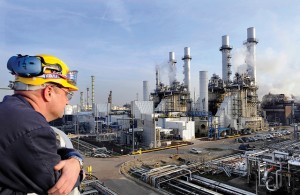Panelist forums covering refining and petrochemicals during the 22nd World Petroleum Congress (WPC) in Istanbul, July 9 – 13, 2017 included a keynote address by the downstream director at Royal Dutch Shell plc, John Abbott. He noted that petrochemical demand has been increasing by 3.7% per year over the past 15 years. Moreover, he emphasized the likelihood that this trend will continue in order to meet demand for petrochemical derived products, such as insulation, and a wide range of other products important to energy efficiency and emissions reduction.
In capturing value available from petrochemical demand, Shell Chemical Appalachia LLC has committed to building a new major petrochemical complex, known as the US Pennsylvania Petrochemicals Complex, on the banks of the Ohio River in Potter Township in Beaver County near Pittsburgh, Pennsylvania.
The steam cracker will process ethane from shale gas produced out of the Marcellus and Utica basins to produce 1.6 million tonnes per year (tpy) of polyethylene (PE). This strategic decision by Shell was heavily influenced not only by the abundant availability of the nearby shale feedsocks, but also due to the fact that more than 70% of North American PE customers are within a 700 mile radius of Pittsburgh.
Shell Chemical LP has also planned to build its fourth linear alpha olefins (LAO) unit in Geismar, Louisiana at 425,000 tpy. The LAO facility is already North America’s largest. Once the fourth unit is completed (broke ground in February 2016), the facility will be the world’s largest. Based on all the downstream olefins opportunities mentioned at the Istanbul 22nd WPC, it would seem that the refining industry is less alluring to investors, compared to petrochemicals. However, Abbott noted that refinery and petrochemical integration will continue to evolve with enabling technology such as enhanced digitalization to strip out costs and streamline manufacturing processes.
Considering there are currently about one billion cars on the road throughout the world, by 2040 the International Energy Agency (IEA) believes there will be 2 billion cars on the road, with at least 92% of these cars being gasoline driven. This is why the transportation market as well as the petrochemical market will continue to need refineries.
Recently, Nobel Prize winning economist, Robert Fogel projected a world economy of $307 trillion in 2040. Based on Fogel’s prediction, the global economy will triple in 25 years, so it stands to reason that refineries will expand with the economy, in spite of new energy alternatives. With new oil discoveries in the Texas Permian Basin and elsewhere that allow for the same cost efficiencies as the giant Ghawar oilfield in Saudi Arabia, some experts speculate that refineries downstream from these new hydrocarbon resources could be running full-out for at least another 100 years to supply the market.








Leave a Reply
You must be logged in to post a comment.